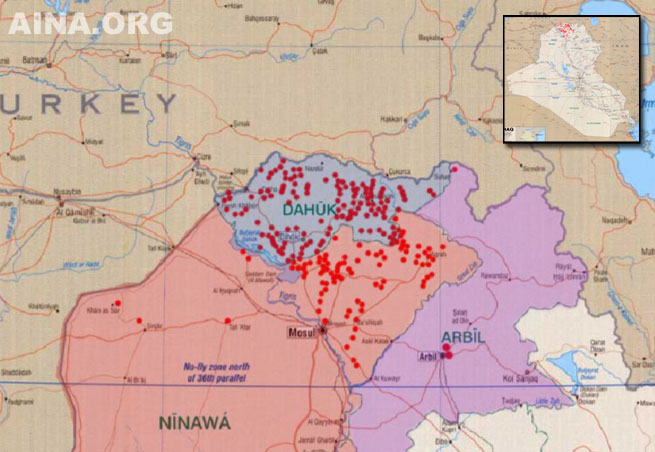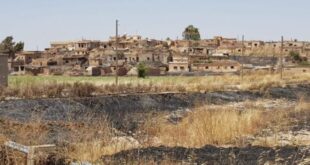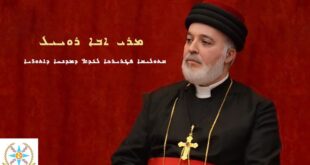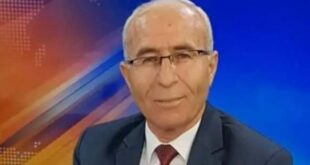
The historic Assyrian political aspirations for a self-administered area in the plains of Nineveh in the environs of Mosul were officially endorsed by the Baghdad Conference of October 2003. Officially known as the Chaldean Syriac Assyrian Conference, the Baghdad conference was jointly sponsored by the Assyrian Democratic Movement (ADM) and the Assyrian Democratic Organization (ADO). The conference drew wide support from the Assyrian denominations, (The Church of the East, the Syriac Orthodox Church, the Chaldean Church of Babylon) as well as the Armenian Church. In the final declaration of the conference, the participants advocated “the need to designate an administrative region for our people in the Nineveh plain with the participation of other ethnic and religious groups, where a special law will be established for self-administration and the assurance of administrative, political, cultural rights in towns and villages throughout Iraq where our people reside.” The Baghdad Conference was a historic milestone in the modern history of Iraq in that it represented the first and only comprehensive gathering of Assyrians from various religious and political backgrounds. The participants debated and agreed upon a common political platform representing the aspirations of Assyrians in Iraq.
The proposal for an Assyrian self-administered zone has come closer to acceptance with its inclusion in the Transitional Administrative Law (TAL, English, Arabic) officially signed by the Iraqi Governing Council on March 1st, 2004. In that precursor to the future Iraqi constitution, Assyrian demands for a sanctuary are included in Article 53, paragraph D: “This law shall guarantee the administrative, cultural, and political rights of the Turcomans, Chaldoassyrians, and all other citizens.” For Assyrians, this small and still vague reference was tenaciously fought for in the deliberations leading up to the final version of the TAL. Some insiders within the Assyrian political leadership in Iraq had noted a possible Assyrian decision to pull out of the deliberations if this key demand had not been met.
The Assyrian drive for a self-administered area is based on a fundamental premise that cultural survival of the indigenous Christian Assyrians depends on their ability to administer their own affairs in the Nineveh plain. The importance of the TAL rests in the fact that it represents, for the first time ever, an acceptance by the Iraqis themselves as well as the Coalition Provisional Authority that Assyrians (or Chaldoassyrians) exist and have certain rights.
The extent of those rights, however, remains undefined and problematic in that the right to self- determination remains vague and, secondly, in action, at least, has not been really recognized by the Behdanani Kurdish leadership as a defined entity independent of their own occupation and rule. To the Kurds, the defining relationship to the Assyrian areas is their continued occupation of Assyrian parts of Arbil and Dohuk and their undisguised designs on the city of Karkuk and Nineveh province. The TAL’s article 53 paragraph A states “The Kurdistan Regional Government is recognized as the official government of the territories that were administered by the (sic) that government on 19 March 2003 in the governorates of Dohuk, Arbil, Sulaimaniya, Kirkuk, Diyala and Nineveh (sic).” To Assyrians, what has already been a catastrophic experiment in Behdanani Kurdish rule in the occupied Assyrian lands in Arbil and Duhok now threatens to be extended further into Assyrian areas. As one Assyrian analyst noted, “What has until now been an illegal and brutal occupation and subjugation of Assyrians may now be codified in law.” Still more ominous to Assyrians is the reference to the ethnically diverse city of Karkuk and the remaining Assyrian towns and villages in the Nineveh plain. The same analyst commented “The Kurds have drawn their map- their line in the sand- and it includes all of the remaining Assyrian towns and villages, including those previously under government control.”
For Assyrians, self administration essentially entails local self rule by Assyrians with a direct relationship to the central government in Baghdad, not an occupied extension subsumed by the KRG. As an Assyrian political leader noted “The Assyrian experience with the KRG has been too bloody, too costly to be acceptable.” Referring to the experience of Kurdish autonomy following the first Gulf War, the analyst added “Just imagine if they had unfettered control with legal justification for their rule. We can’t allow ourselves to be a wholly owned subsidiary of the KRG.”
Ultimately, the TAL did keep the door open for Assyrian political aspirations in Iraq. However, with its overreaching concessions to the Kurds, the TAL has also framed the context of the next stage of struggle against continued Kurdish hegemony against Assyrian lands. As one Assyrian summarized “We now have our foot in the door, but the KRG is amassed on the other side trying to forcibly shut it.”
The recent violence in Iraq to the south of the Assyrian areas and the constant threat from the Behdanani Kurds to the north and east has placed the Assyrians in an uncomfortable squeeze. Assyrian consternation over the lack of security conjures up vivid recollections of Iraqi brutality against Assyrians. The historic Assyrian heartland in the north of Iraq has been under attack and steadily diminished since the inception of the modern Iraqi state. Beginning with the Simele massacre of 3000 civilians in 1933, 50-60 Assyrian villages were lost in the north. An additional 200 villages were destroyed by the Baathist regime between the 1960’s and 1980’s in an effort to forcibly cleanse the area of Assyrian Christians. Many of these villages were subsequently re-inhabited by Kurdish squatters. Since the first Gulf War another nearly 50 villages have been expropriated in whole or in part by Kurdish squatters. Assyrian calls for the establishment of a self administered area as a sanctuary is an attempt to reclaim many of these lost villages and to salvage the last remaining presence of the indigenous Assyrian Christians.
 Assyrian Democratic Organization ADO
Assyrian Democratic Organization ADO












